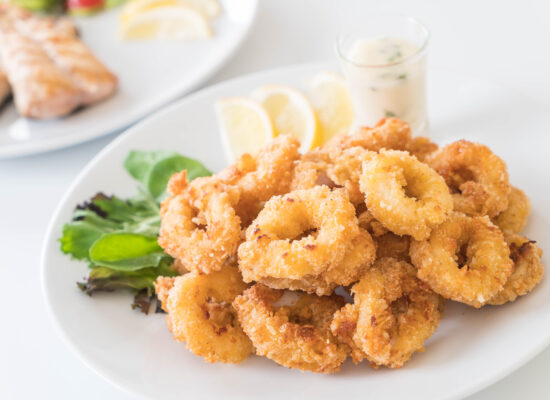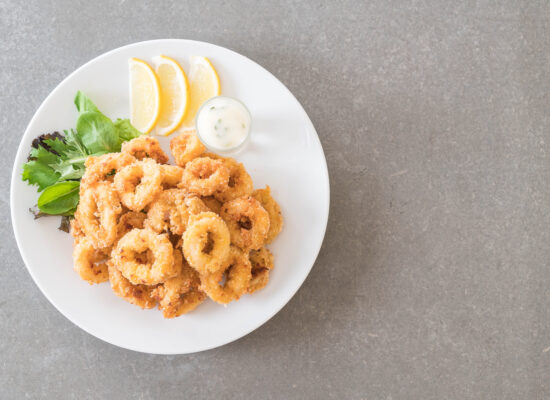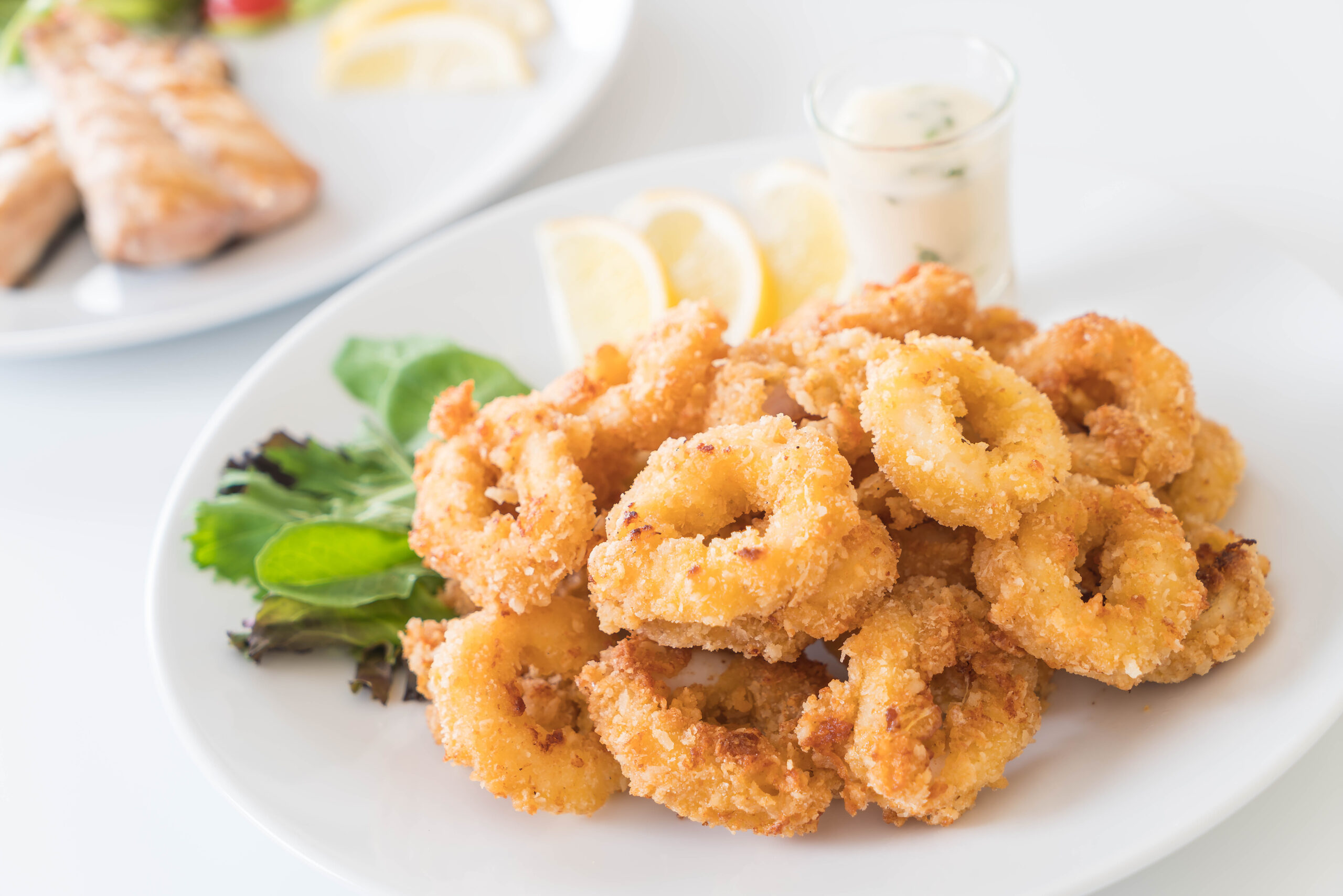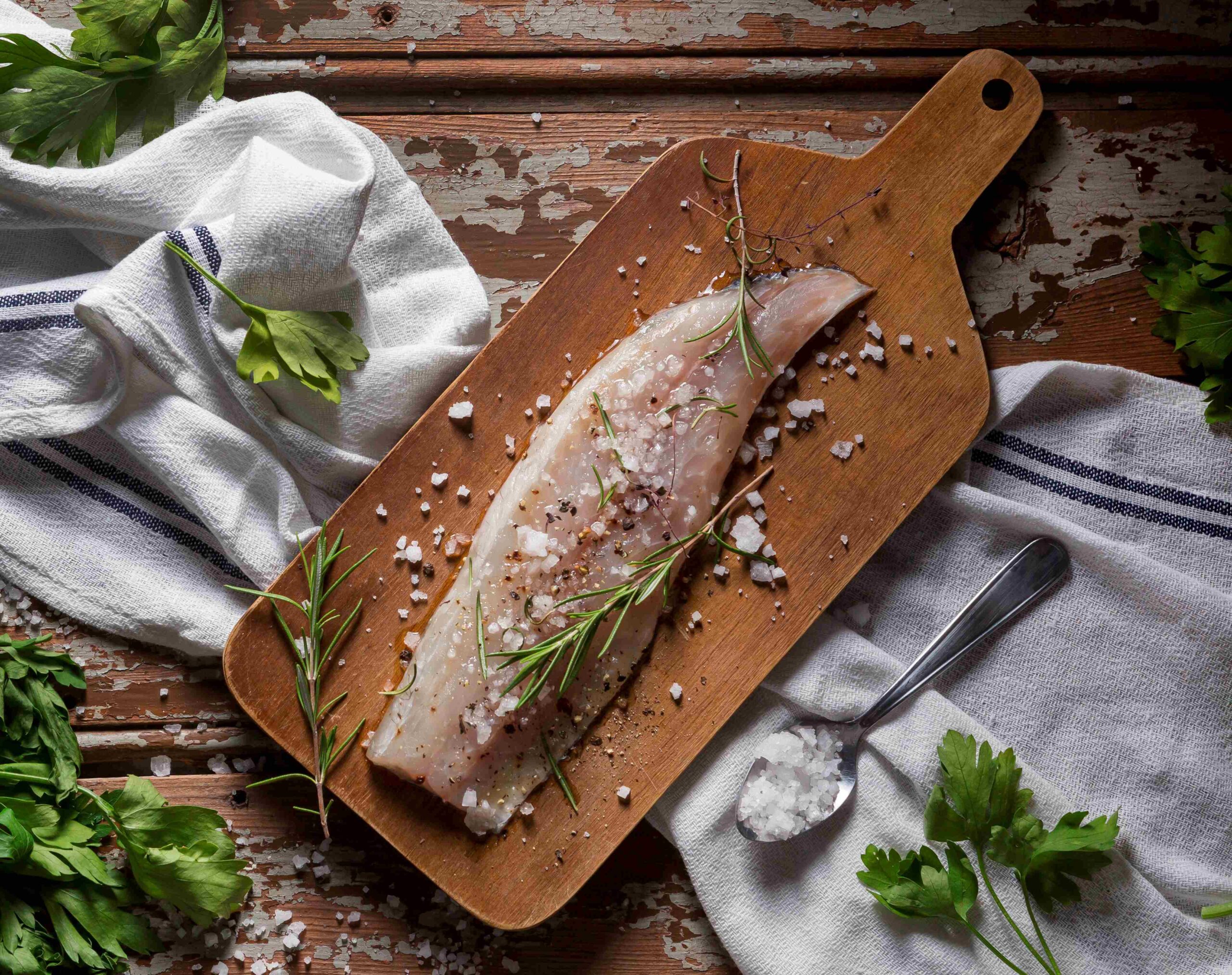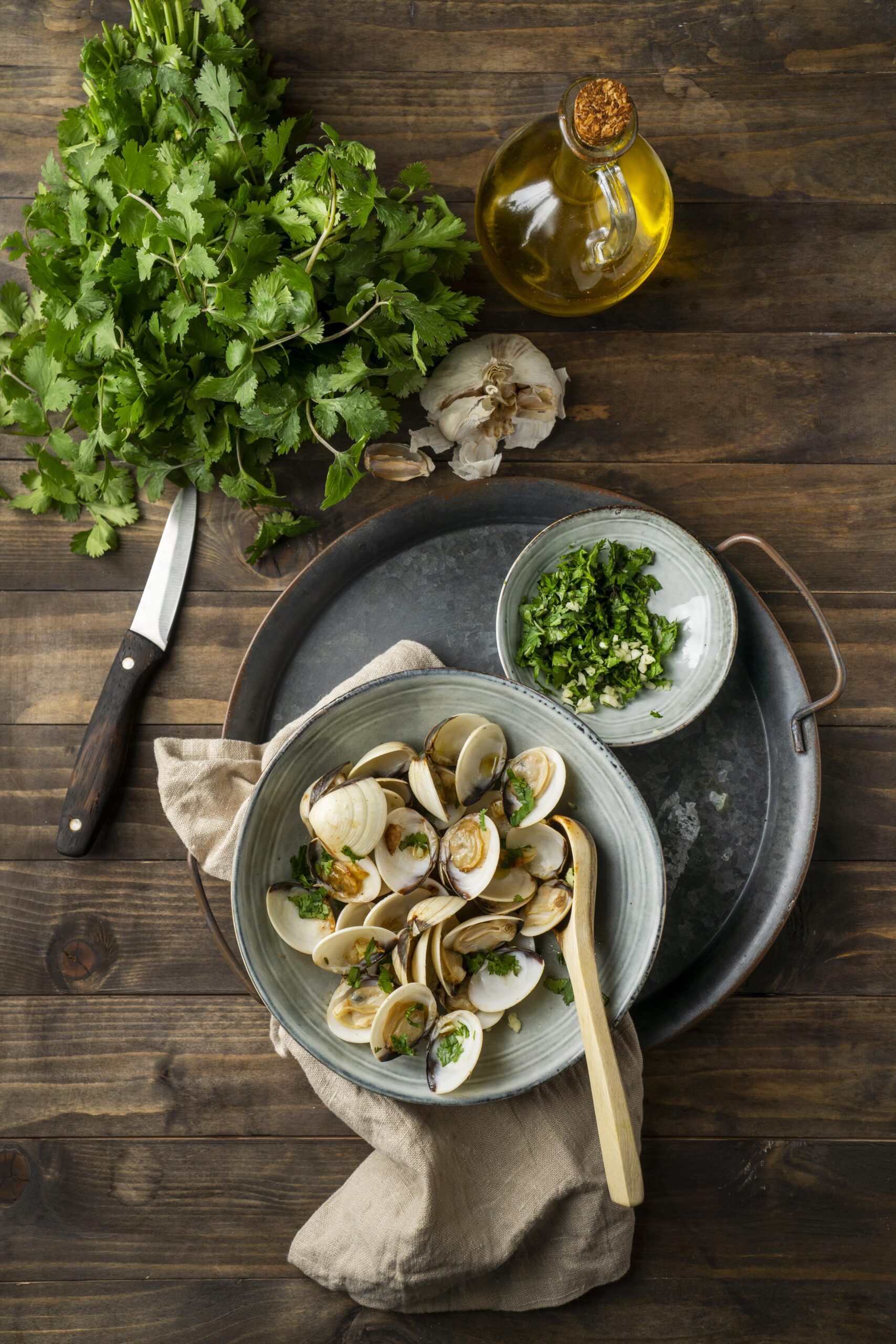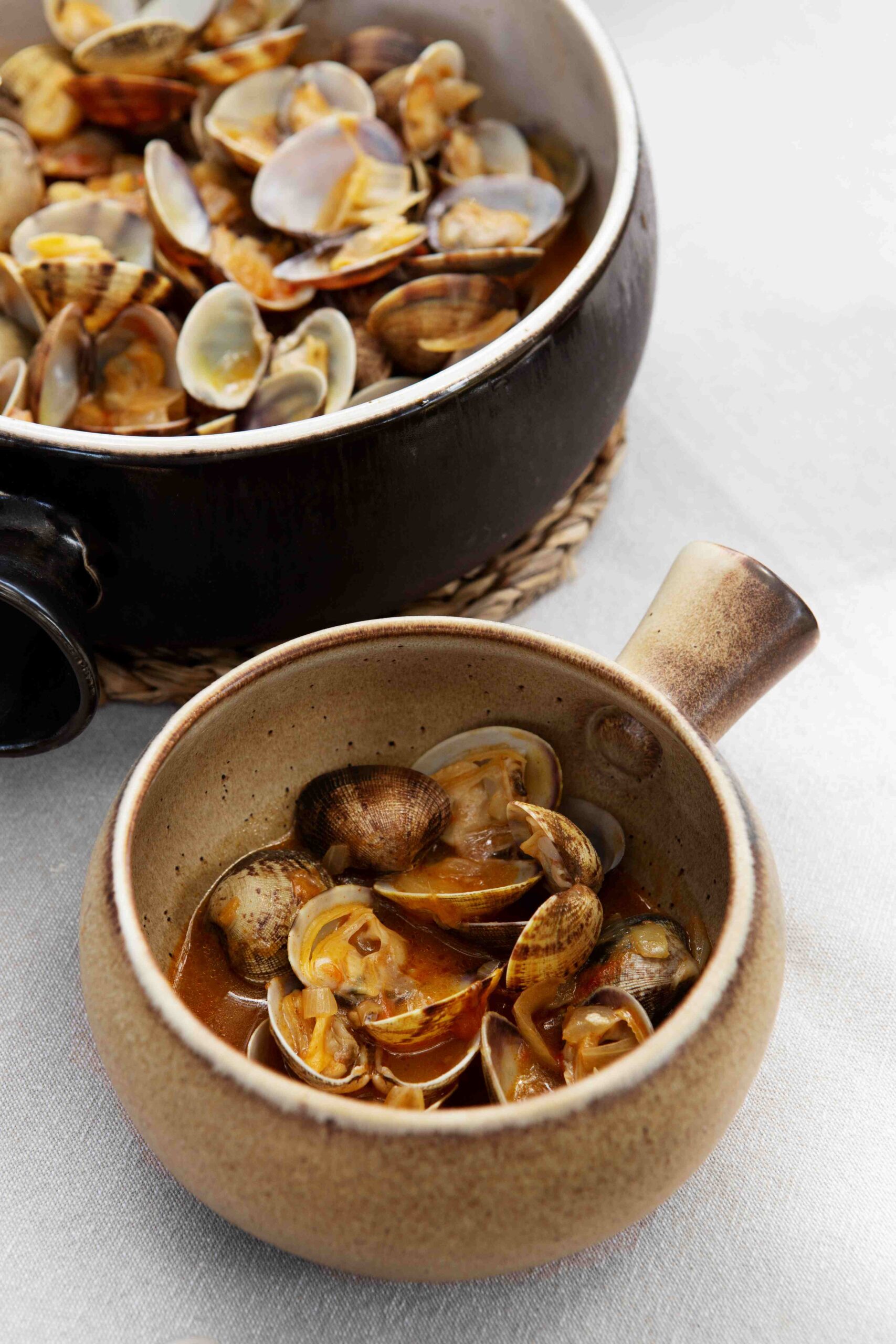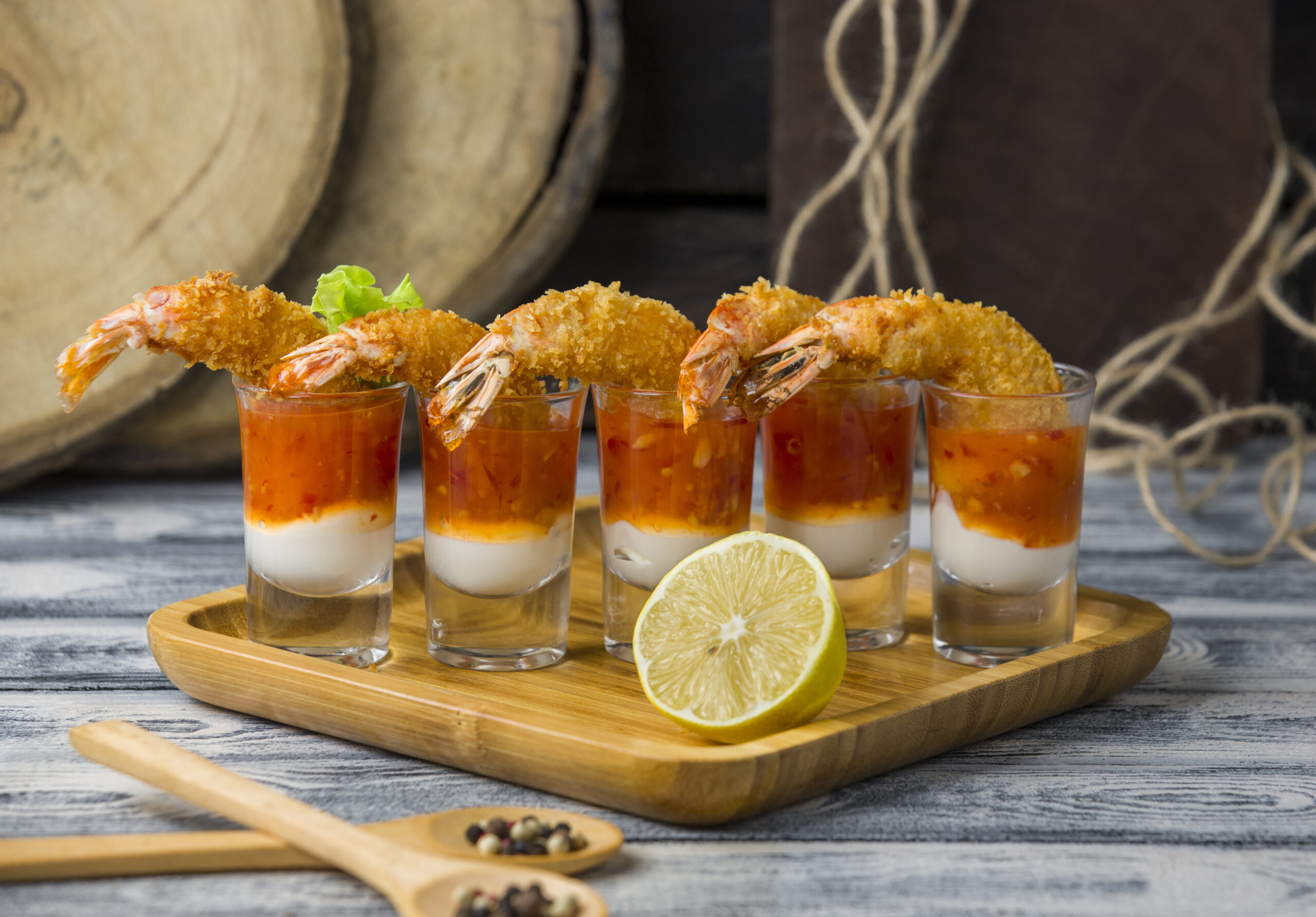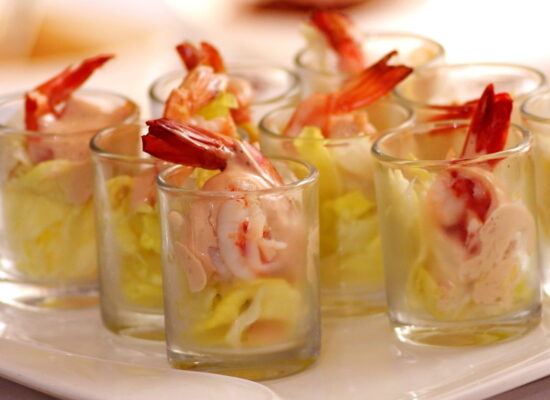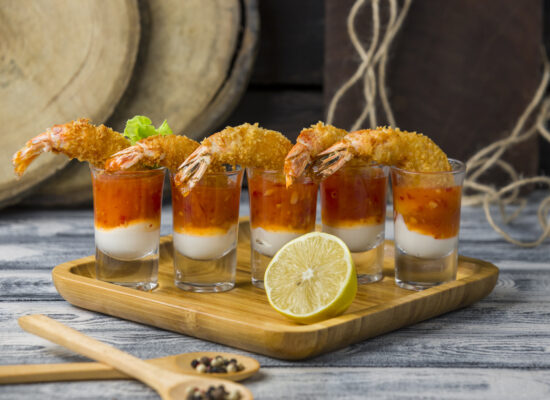Fried calamari is a beloved seafood dish enjoyed around the world for its crispy, golden exterior and tender interior. Whether you’re preparing it as an appetizer or the main event, fried calamari is a crowd-pleaser that’s easy to make at home. Here’s how to create the perfect fried calamari along with tips to make it even more delicious!
Ingredients:
For the Fried Calamari:
- 500g fresh calamari (squid), cleaned and sliced into rings
- 1 cup all-purpose flour
- 1/2 cup cornmeal (optional for extra crunch)
- 1 teaspoon paprika
- 1/2 teaspoon garlic powder
- Salt and freshly ground black pepper, to taste
- 1 cup buttermilk (or regular milk)
- Vegetable oil for frying
- Lemon wedges for serving
For the Dipping Sauce:
- 1/2 cup mayonnaise
- 2 tablespoons lemon juice
- 1 tablespoon hot sauce (optional)
- 1 clove garlic, minced
- Salt and pepper, to taste
Instructions:
Prepare the Calamari
Start by cleaning the calamari if it hasn’t been pre-cleaned. Slice the body into rings, and use the tentacles as they are. Soak the calamari in buttermilk for about 30 minutes to tenderize it and help the coating stick better.Prepare the Coating
In a large bowl, combine the flour, cornmeal (if using), paprika, garlic powder, salt, and freshly ground black pepper. This coating will give your fried calamari that perfect crunch and flavor.Fry the Calamari
Heat vegetable oil in a large, deep skillet or pot over medium-high heat until it reaches 350°F (180°C). Remove the calamari from the buttermilk, allowing excess liquid to drip off, and toss it in the seasoned flour mixture. Shake off any excess flour and carefully place the calamari rings and tentacles into the hot oil in batches. Fry for 2-3 minutes or until golden brown and crispy. Transfer to a paper towel-lined plate to drain.Make the Dipping Sauce
While the calamari is frying, prepare a quick dipping sauce by mixing mayonnaise, lemon juice, garlic, and hot sauce in a bowl. Season with salt and pepper to taste. This tangy sauce complements the fried seafood perfectly.Serve the Fried Calamari
Once the fried calamari is done, serve immediately with lemon wedges on the side and the dipping sauce. The fresh squeeze of lemon adds a burst of acidity that pairs beautifully with the crispy seafood.
Tips for the Best Fried Calamari:
- Use Fresh Calamari: Whenever possible, use fresh calamari for the best texture and flavor. If using frozen, ensure it is fully thawed and patted dry before frying.
- Avoid Overcooking: Overcooked calamari can become tough and rubbery. Keep the frying time short, just until the pieces turn golden and crispy.
- Fry in Batches: Frying too much calamari at once can lower the oil temperature, leading to soggy results. Work in small batches for the crispiest texture.
Nutritional Benefits of Fried Calamari:
While fried calamari is known for its crispy goodness, it also offers some nutritional benefits. Calamari is a great source of protein and low in fat when grilled or baked, but even when fried, it still provides valuable nutrients such as omega-3 fatty acids and essential minerals like selenium.
How Fried Calamari Is Enjoyed Around the World:
Across different countries, fried calamari is prepared in various ways, reflecting regional flavors and culinary traditions:
- In Italy, calamari fritti is often served with a simple squeeze of lemon and sometimes a side of marinara sauce.
- In Spain, calamares a la romana is a favorite tapa, typically served with aioli or mayonnaise.
- In Greece, fried calamari (known as kalamari) is usually enjoyed with tzatziki or a lemon-garlic dressing.
For more information on how fried calamari and other seafood are prepared globally, visit here.
Delicious Variations of Fried Calamari:
There are plenty of ways to make fried calamari even more exciting with different flavor twists:
- Spicy Fried Calamari: Add some cayenne pepper or red pepper flakes to the flour mixture for a bit of heat.
- Herb-Infused Calamari: Mix fresh chopped herbs like parsley, basil, or thyme into the flour coating to enhance the flavor.
- Coconut Crusted Calamari: Swap half of the flour for shredded coconut to give the calamari a tropical twist with extra crunch.
Best Side Dishes for Fried Calamari:
Pair your fried calamari with these delicious sides to complete your meal:
- Garlic Bread: Crispy garlic bread is a great choice to soak up any leftover dipping sauce.
- Coleslaw: A tangy coleslaw adds a refreshing crunch that contrasts beautifully with the fried calamari.
- Grilled Vegetables: Lightly charred zucchini, peppers, or asparagus make a healthy and delicious side to accompany this crispy seafood dish.
Whether served as a starter or the main attraction, fried calamari is a seafood classic that’s hard to resist. With its light and crispy coating and tender texture, this dish is perfect for any occasion. Try experimenting with different seasonings, dipping sauces, and sides to make your fried calamari truly unforgettable.
For more mouth-watering seafood recipes, explore the various ways to enjoy fried calamari and other seafood delicacies.
